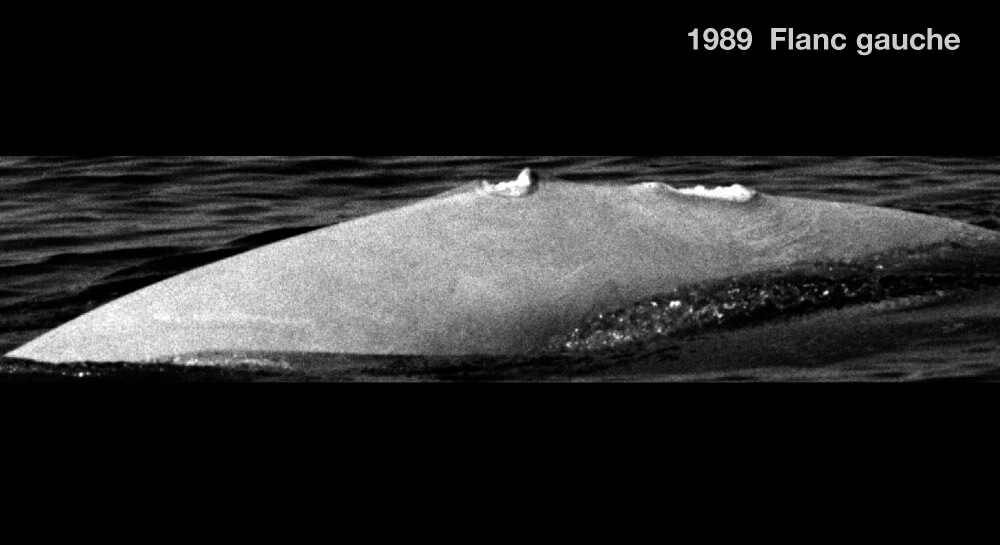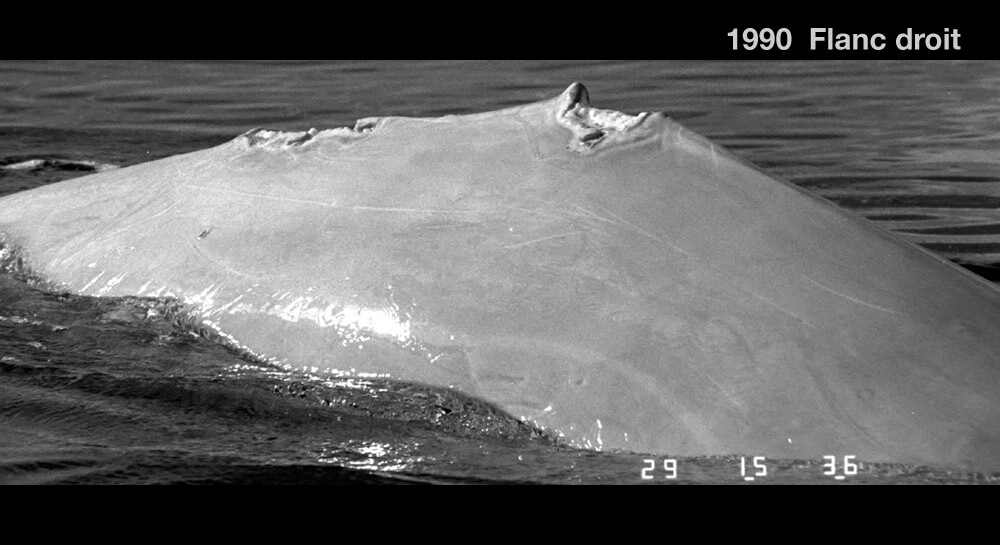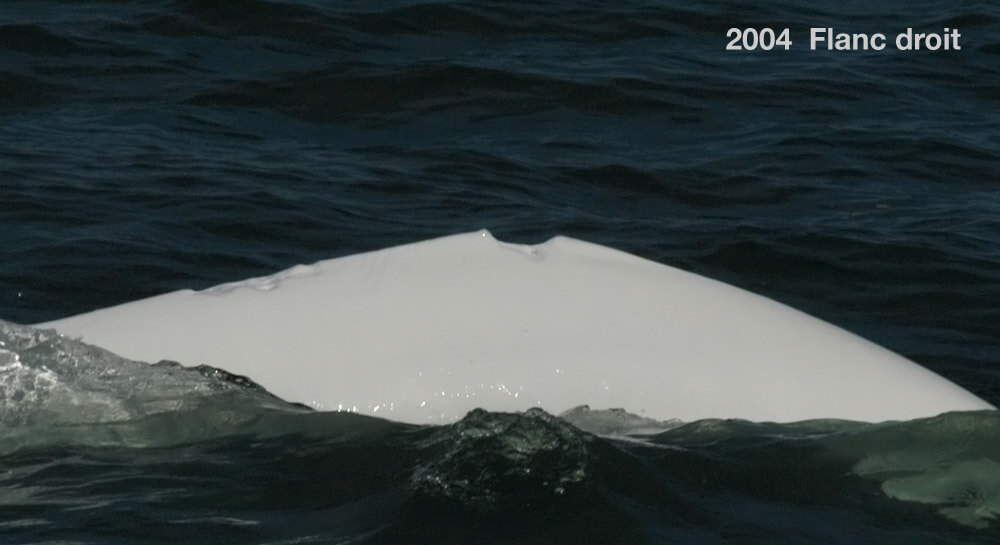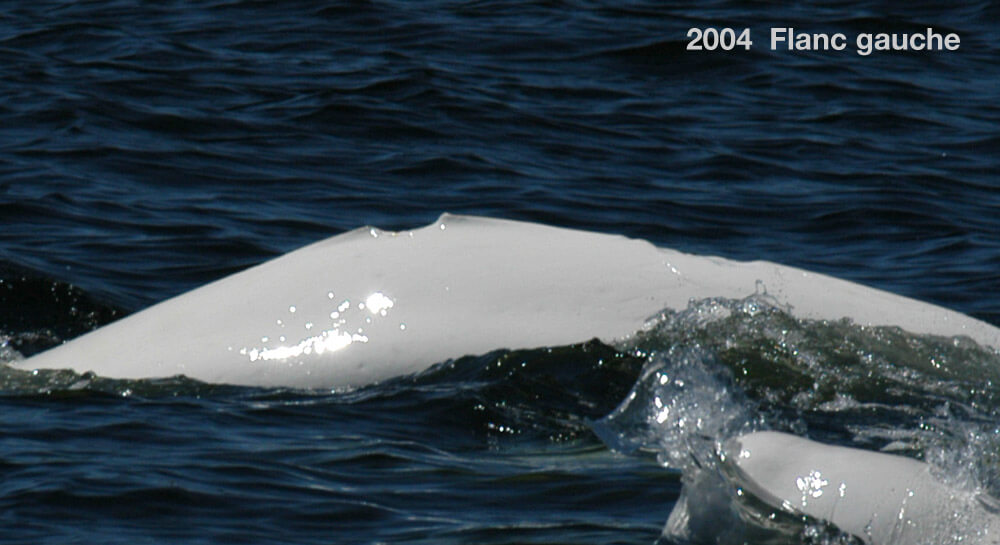Chérubin (1986-2021)
Beluga

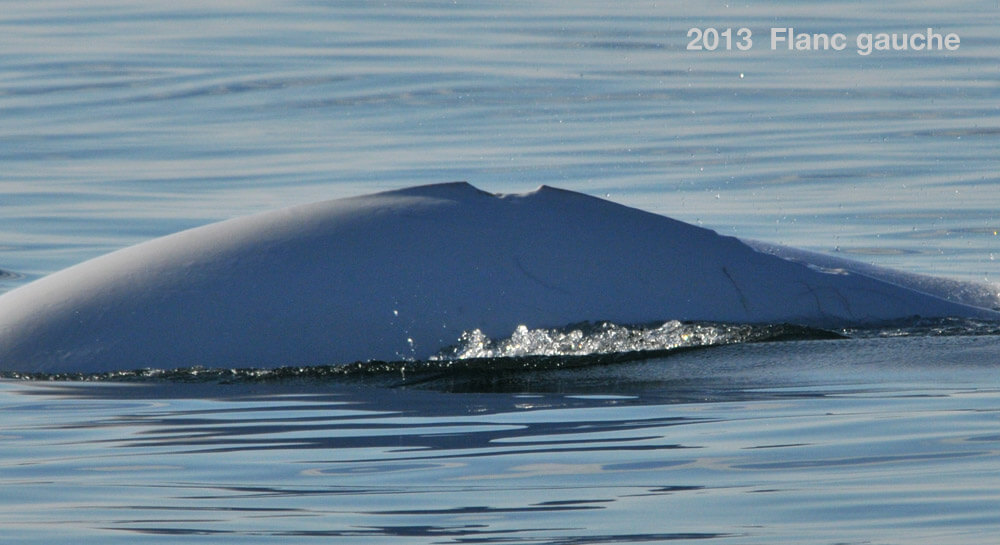
Adopted by Radio CIEL FM listeners
-
ID number
DL0105
-
Sex
Male
-
Year of birth
Around 1986 (death in 2021)
-
Known Since
1989
Distinctive traits
Cherub’s two deep scars are very large and visible from both sides. One of them gives the impression that he’s missing almost a third of his dorsal crest.
Life history
When we first met Chérubin in 1989, he was gray. From 2000 onwards, he was always noted as white. He would have been born around 1986.
Chérubin’s associations and habits already led us to presume that he was a male; a biopsy confirmed it. Chérubin is part of the network of males that frequent the lower estuary between Tadoussac and Les Escoumins.
Chérubin is curious, even daring. He often prowls around our boat. One day in autumn 1990, in the company of two youngsters, he nibbled the propeller and pushed the right side of the inflatable boat.
Chérubin was found dead on April 25, 2021. The last observation was in 2015. What happened in between these two observations?
Observations history in the Estuary
Years in which the animal was not observed Years in which the animal was observed
Latest news
Le Bleuvet lies just outside the mouth of the Saguenay Fjord. Ahead of us, at least 70 belugas make up a fairly dynamic herd of adults and juveniles. We soon realize that the herd actually consists of groups of around 15 individuals. On one side, the females, juveniles and a calf are all together, and on the other, the big white males and young males swim together. Among the males is Chérubin. When the GREMM team first photographed Chérubin in 1989, he was still all gray. Today, he’s a big white male. Alongside Chérubin is Lugi, another beluga known to our team.
Beluga whales pass us by and a whiff of exhale wafts up our noses. Phew, it doesn’t smell like roses! Not far from us, a large group of grey seals pass by. The river is teeming with them!
Heading south, the belugas are swimming very close together, making individual movements difficult to follow. Gradually, the fog settles in. Conditions for photo-identification are no longer favourable, so we put an end to contact.
On October 1, 2013, in the afternoon, we spotted a group of around forty individuals off Île aux Basques. The herd in which Chérubin is found is made up of white and gray animals, i.e. adults and calves. The protocol was set aside to capture underwater images of the belugas as they approached the research boat out of curiosity.
Sponsor
Radio CIEL FM listeners adopted Chérubin (1990).

